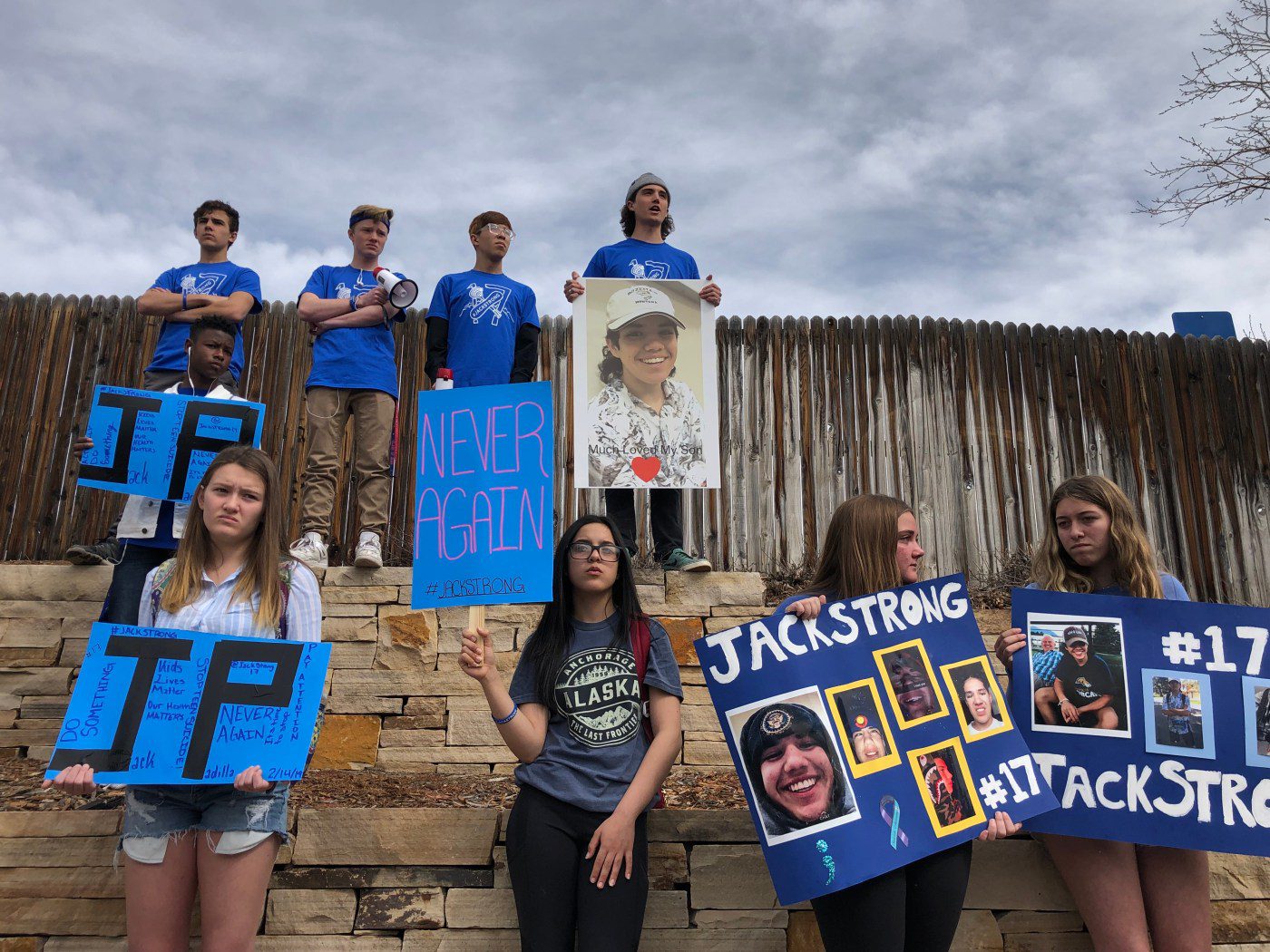Students who walked out of Cherry Creek High School five years ago to protest what they saw as glossing over a classmate’s suicide are still working to share their message that youth can remake the culture around mental health.
Jack Padilla, 15, died by suicide in March 2019. In response, some of his classmates and his older brother launched a group they called Jackstrong to push for more open discussion of mental health. Four leading members met Monday to discuss their ongoing work with The Denver Post.
The group started meeting to brainstorm shortly after Jack’s death, said Gio Villagrana, 20, who now attends Metropolitan State University Denver. They initially focused on events to draw attention to the problem, including the school walkout and a Colorado Avalanche game dedicated to Jack, he said.
Since then, all have graduated and either gone to college or started their careers. They’ve also testified in favor of mental health bills, including, most recently, one that created a mental health screening program for students in sixth through 12th grade.
But the core of their work is still focused on helping youth to help each other, said John Padilla, 25, who is Jack’s older brother and now lives in Montana.
“I think the political landscape and the social landscape were very different in 2019,” he said.
Rick Padilla, father of John and Jack, said the group has honored Jack’s life. He also got involved in mental health, switching careers to work as a suicide prevention administrator for the Denver Department of Public Health and Environment after Jack’s death.
“We all want to be remembered, and these kids have helped keep Jack’s memory alive,” he said.
The most recent data on youth mental health, from 2023, showed fewer young people reported possible depression or suicidal thoughts than at any point since 2013. The Healthy Kids Colorado survey found about 11% of youth had considered suicide in the previous year, 9% had made a plan and 6% had made an attempt.
Villagrana said he isn’t sure whether youth mental health has actually improved since Jack died: Young people have even more to worry about now than they did then, but they also feel more open talking about their struggles. Adults also are changing their views — his mother recently talked about whether a family member would benefit from therapy, which is something she never would have considered a few years ago, Villagrana said.
That’s especially noticeable when it comes to talking about suicide, said Janie Wishmier, 20, who lives in Denver. During the 2019 walkout, students said adults at school hadn’t discussed Jack’s death or another student’s suicide earlier in the semester. The school did hold an assembly that it said focused on suicide prevention, unity and resilience.
“I think suicide isn’t as scary a word as it used to be,” Wishmier said.
Youth need space to process their feelings after a peer dies by suicide, particularly since not everyone grieves on the same timeline, according to Boston Children’s Hospital. Adults should be honest that the person died by suicide, but not discuss details such as a method or speculate about a cause, the guidance said. Any memorials shouldn’t blame the person for their death, but also shouldn’t glorify them, to avoid sending a message that dying is a way of getting sympathy or love.
High school is difficult for almost everyone, and students need an environment where they feel comfortable talking to someone if they’re struggling, said Lily Osborne, 20, who attends the University of Nebraska Lincoln. They also need encouragement from people who’ve been through it recently that life gets better after graduation, she said.
“You’ve just got to make it there,” she said.
People don’t automatically feel better when they get to college, though, because they’re dealing with new pressures without their friends and parents there for support, John Padilla said. The group is working to reach more students on college campuses, including through screening documentaries that he’s worked on about mental health in Colorado and offering resources to viewers, he said.
The “top-down” approach where authority figures start a program or tell young people what to do isn’t effective in improving mental health, John Padilla said. Youth need to know how they can help, and one of the powerful things they can do is to ask struggling friends if they have a suicide plan, he said. Research has repeatedly shown that asking about suicide won’t plant the idea in someone’s head or push them to do it.
The only lasting changes come out of communities working together to address their mental health problems, Villagrana said.
“I don’t think that mental health can be dealt with any other way,” he said.
Sign up for our weekly newsletter to get health news sent straight to your inbox.




